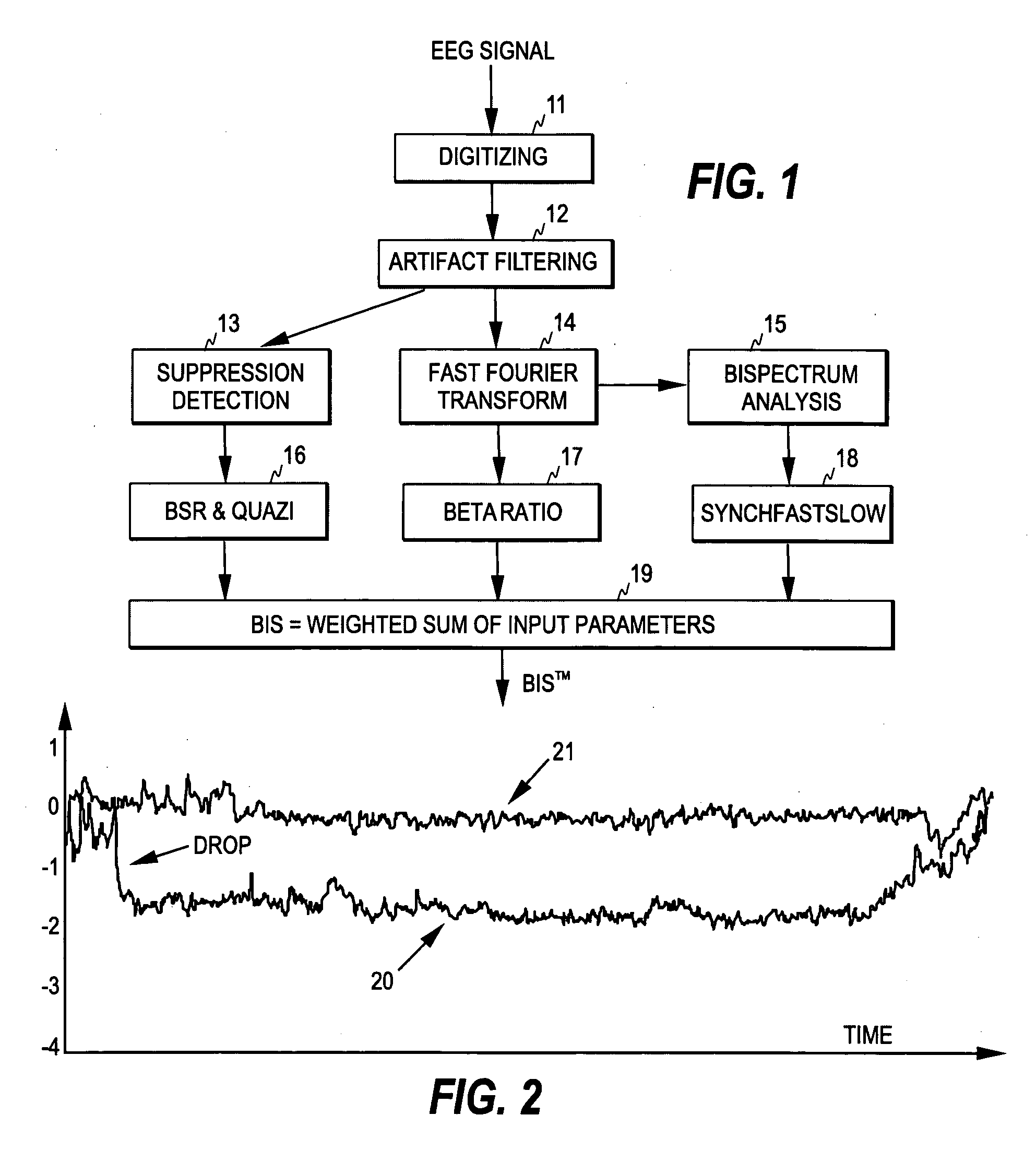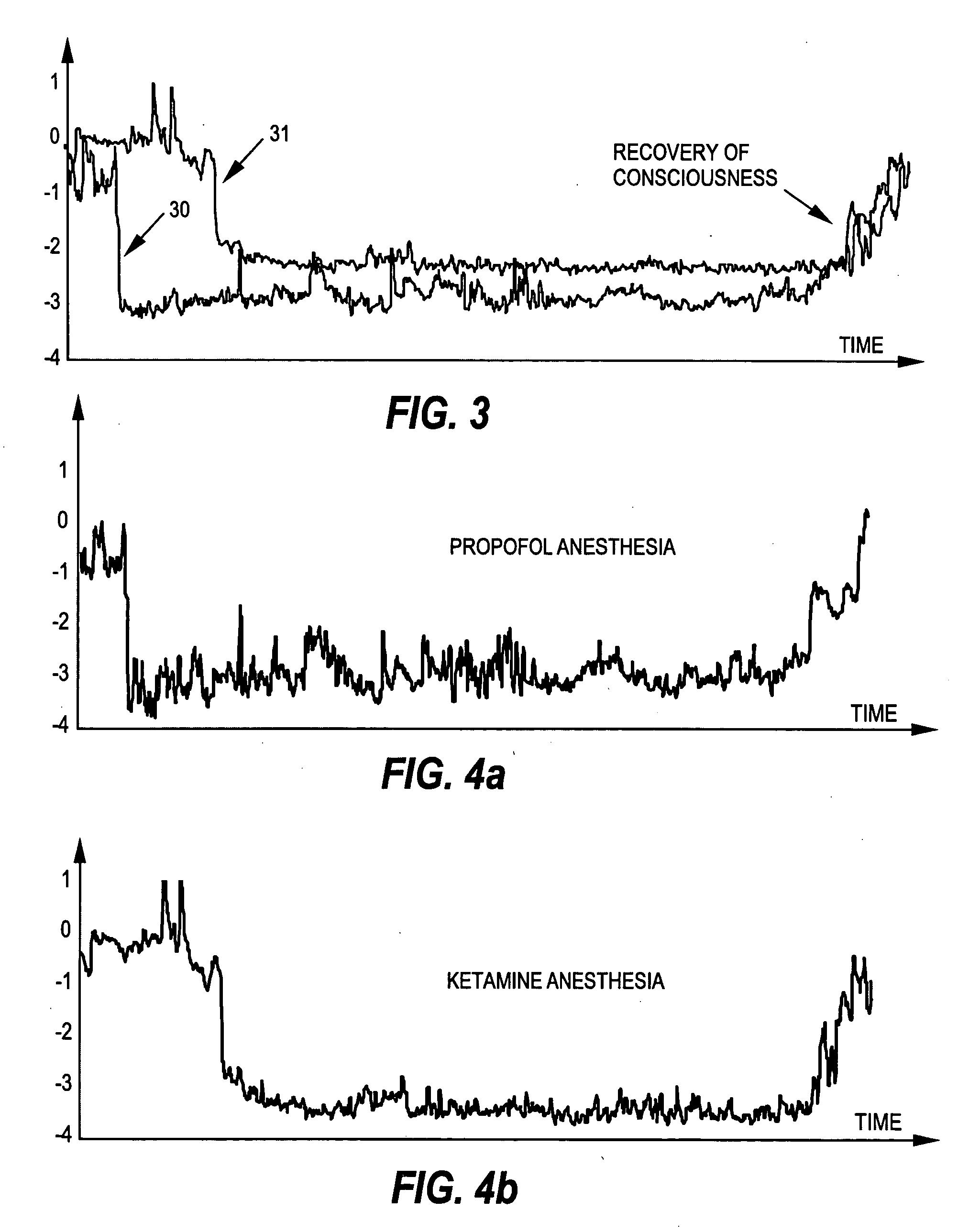Monitoring of the cerebral state of a subject
a technology of cerebral state and subject, applied in the field of monitoring of the cerebral state of a subject, can solve the problems of erroneously high or only moderately decreasing the reliability of the bis-based patient monitor in connection with the administration of nmda antagonists, and achieve the effect of extending the applicability of existing patient monitors and improving reliability
- Summary
- Abstract
- Description
- Claims
- Application Information
AI Technical Summary
Benefits of technology
Problems solved by technology
Method used
Image
Examples
Embodiment Construction
[0039] As the present invention finds a typical application in the known BIS algorithm, the relevant parts of the determination of the BIS are first discussed briefly with reference to FIG. 1, which illustrates the steps of the BIS algorithm. A more detailed discussion of the BIS algorithm can be found in the above-mentioned article by Ira J. Rampil, which is incorporated herein by reference in its entirety.
[0040] The EEG signal measured from a patient is first digitized (step 11), and the sampled EEG signal is filtered to exclude high- and low-frequency artifacts (step 12). As is common in the art, the digitized signal samples are processed as sets of sequential signal samples representing finite time blocks or time windows, commonly termed “epochs”.
[0041] The BIS involves the calculation of three parameters: Burst Suppression Ratio, Beta Ratio, and SynchFastSlow, and the resulting index is a combination of the three parameters.
[0042] If an incoming epoch is artifact-free or dee...
PUM
 Login to View More
Login to View More Abstract
Description
Claims
Application Information
 Login to View More
Login to View More - R&D
- Intellectual Property
- Life Sciences
- Materials
- Tech Scout
- Unparalleled Data Quality
- Higher Quality Content
- 60% Fewer Hallucinations
Browse by: Latest US Patents, China's latest patents, Technical Efficacy Thesaurus, Application Domain, Technology Topic, Popular Technical Reports.
© 2025 PatSnap. All rights reserved.Legal|Privacy policy|Modern Slavery Act Transparency Statement|Sitemap|About US| Contact US: help@patsnap.com



